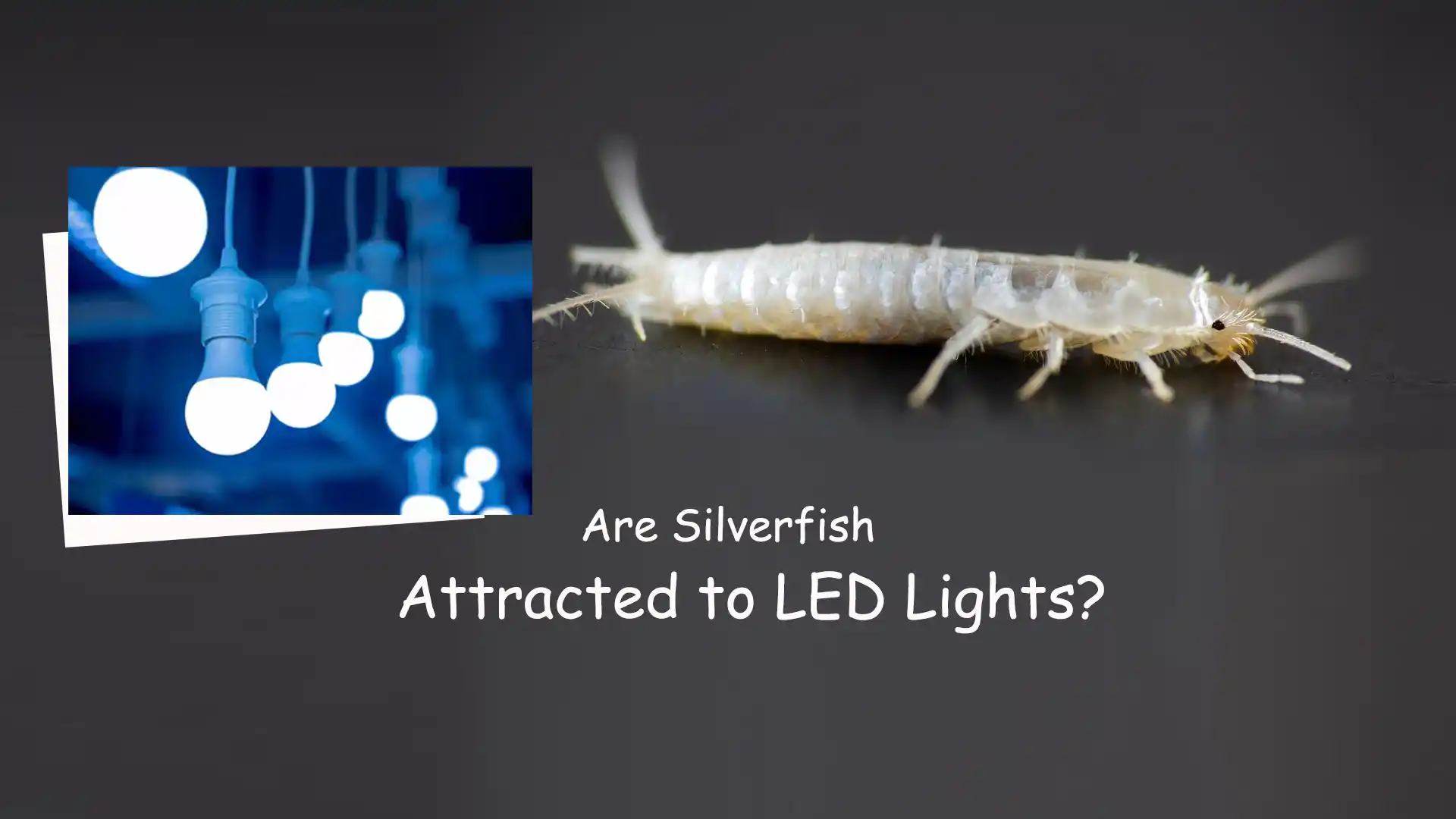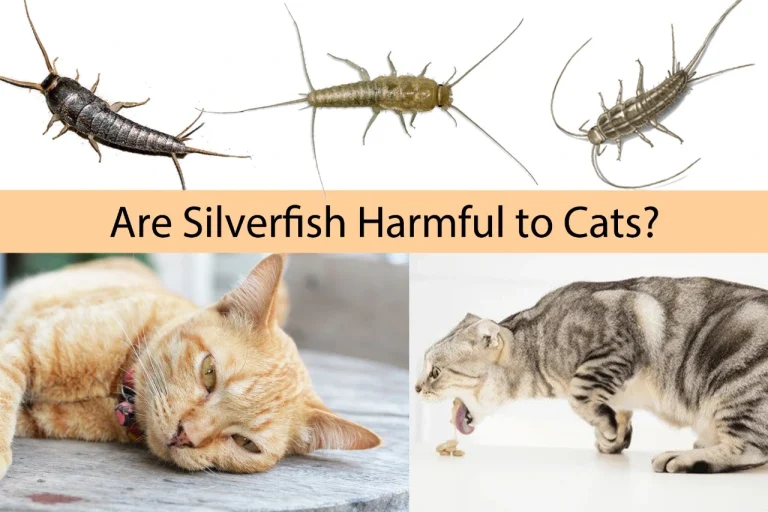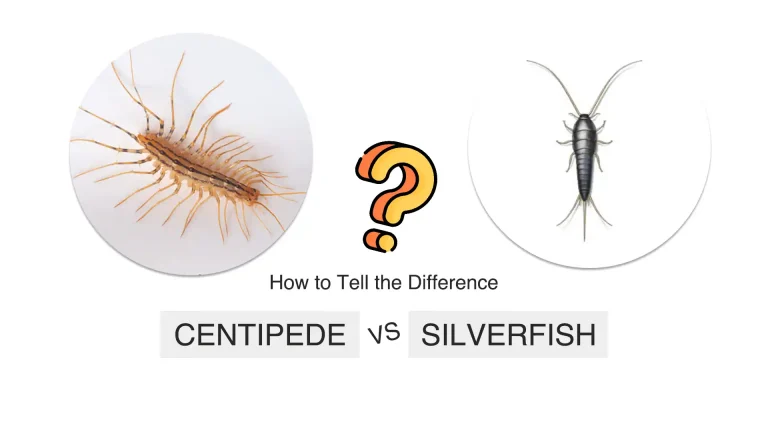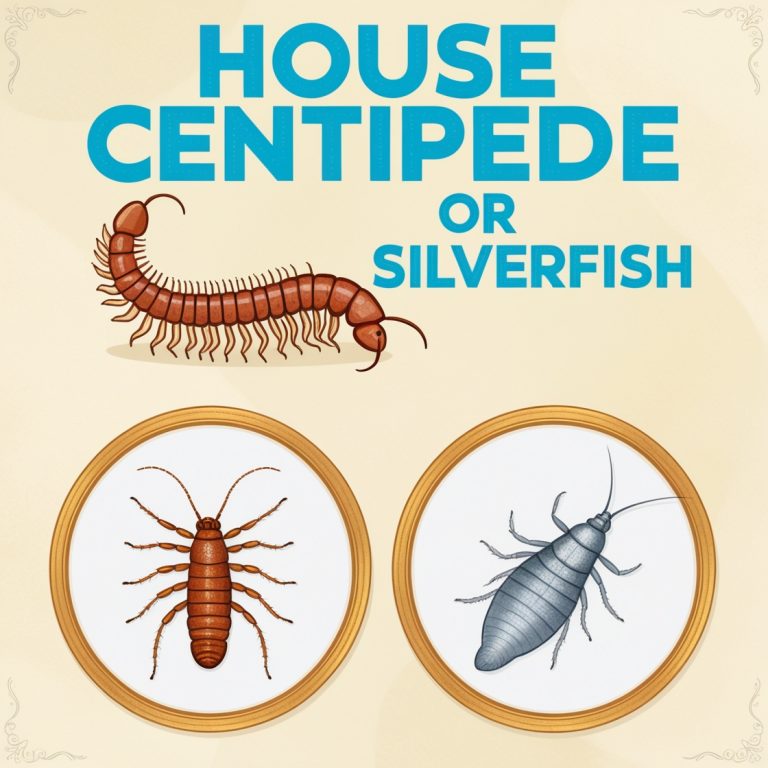Are Silverfish Attracted to LED Lights? The Facts Explained

- Do LED Lights Really Attract Silverfish and Other Bugs?
- Reasons Why Silverfish Congregate Around LED Lighting
- The Truth About LED Lights and Bug Attraction
- Stopping an Existing Silverfish Infestation Around LEDs
- Keeping Silverfish Away from LED Lights
- H2: The Truth About LED Lights and Bug Attraction
- H3: The Bottom Line: LEDs Don't Naturally Attract Silverfish
LED lights have become increasingly popular in homes due to their energy efficiency and long lifespan. But some homeowners may wonder – do LED lights attract silverfish and other unwanted pests? Here’s a detailed look at the facts around LEDs and silverfish.
Do LED Lights Really Attract Silverfish and Other Bugs?
The main things to know are:
- LED lights do not attract silverfish because it is an artificial light source that does not emit wavelengths attracting nocturnal insects like silverfish.
- Silverfish are small enough to harbor in cracks and crevices that people install lighting near, inadvertently exposing them.
- Silverfish are not attracted to light of LEDs as a food source, breeding site or harborage location.
- Factors like huge humidity moisture, available food debris, warmth and hiding spots play a much bigger role in silverfish infestations than any wavelengths of light.
- There’s no evidence properly installed LED lighting attracts additional silverfish populations or makes existing pest control issues worse.
The reasons behind LEDs not attracting silverfish have to do with the technology disrupting their behavioral patterns tied to darkness. But first, let’s look closer at why silverfish sometimes innocuously gather near LED installations.
Reasons Why Silverfish Congregate Around LED Lighting
Sometimes seeing silverfish swarming under or near new LED strip lights can wrongly signal the lighting is attracting these nocturnal pests. But actually it’s coincidental congregation, not intentional attraction. Reasons include:
LED Light Colors and Types That Repel Silverfish
- Bright illumination from LEDs can reveal and expose dark silverfish harborages, even if they are not attracted to the sharp visible light wavelengths the LEDs emit. Their preferred darkness is disrupted.
- silverfish are nocturnal, may accidentally accumulate near LEDs when the surrounding area is dark, getting trapped in the light.
- Certain LED colors like shortwave blue, violet and ultraviolet light are less attractive to insects than longer wavelength visible light from yellow bulbs.
- Silverfish seek out cracks, crevices and voids to harbor in that homeowners frequently install LED strip lighting near, inadvertently putting the hiding bugs in proximity to the LEDs.
So rather than being intentionally drawn to LED lighting, qualities of the technology annoy silverfish and conflict with their natural behavioral patterns tied to darkness. But what deters silverfish from LED wavelengths specifically?
The Truth About LED Lights and Bug Attraction
LED lights do not attract flying or crawling pests according to pest control research. First, let’s cover some background on light wavelengths and bug interactions to clarify what deters silverfish from LED bulbs.
What Makes Silverfish Despise LED Lighting?
Silverfish are attracted to darkness, they strongly prefer dark and do not like illumination disrupting their habitats. So LEDs present an annoying environment they instinctively avoid in these key ways:
- LEDs light emit intensely bright, concentrated sharp light versus the dark harborage voids silverfish seek out. This contrasts their preference for darkness.
- The LED light often unintentionally penetrates and exposes silverfish harborages in hidden cracks and wall voids, forcing them to scatter away.
- Long infrared wavelengths also attract bugs and more insects needing heat sources. But LEDs emit shorter ultraviolet and blue wavelengths that deter light-averse silverfish.
So the intrinsic qualities of cool, blue-toned LED tech conflict with silverfish instincts, making the lighting nonsuitable for habitation. But what about other needs like food sources?
Do LED Light Strips and Bulbs Attract Other Bugs?
Research has not found LED installations attract insects or exacerbate existing pest populations. Reasons their wavelengths don’t appeal to silverfish behaviors include:
- LEDs emit highly concentrated peaks of shorter, fast cycling light wavelengths than old warm yellow incandescent bulbs.
- Bug zapper bulbs target specific ultraviolet wavelengths to intentionally lure in flies, which normal white LEDs don’t emit.
- Blacklight-range UV light wavelengths that intentionally draw in some flying insects don’t apply to normal household LED lighting use cases.
- Ambient heat, high humidity and food levels actually impact silverfish pest control issues far more than light wavelengths or types.
Since LED qualities don’t align with silverfish survival needs, simply switching to efficient LED lighting should not attract additional silverfish. Their population sizes instead heavily depend on moisture, temperature and food debris availability in a structure rather than light properties.
Stopping an Existing Silverfish Infestation Around LEDs
If silverfish pests begin congregating around LED bulb or strip installations, the light itself is likely not the root attractant. You need to address what underlying conditions enabled the infestation there in the first place.
- Install weather stripping, door sweeps and window screens to block pest entry points giving silverfish access to interior LED fixtures. This limits their routes to enter living spaces.
- Silverfish can be found in moist areas, so Reduce humidity and moisture issues that allowing silverfish in your home to grow.
- Remove paper materials, old dead insects carcasses, edging glue and other food debris silverfish like to eat to limit their carbohydrate consumables
- Use insecticidal gel baits or dust treatments containing chemicals like fast-acting pyrethroids in voids where LEDs are installed to get rid of silverfish.
- Install supplementary yellow/amber or sodium vapor lights known to repel and deter nocturnal silverfish.
- Areas where silverfish nest must be cleaned and dried out to make the space around LEDs inhospitable.
Taking away the fundamentals silverfish populations need like moisture, food debris and shelter works better than simply removing LED fixtures. An integrated pest management approach covering entry ways, resources, and non-chemical repellents has the most impact.
Keeping Silverfish Away from LED Lights
While LEDs don’t attract silverfish inside, you still want to discourage them from infesting and gathering near any indoor lighting. Useful prevention tips include:
Preventing Silverfish from Invading LED Lights
- Caulk and seal cracks near LED installations so light-averse silverfish can’t access dark voids and cracks to harbor and nest in.
- Add door sweeps and weather stripping around windows and doors to block pest entry points into a home near lighting.
- Keep areas around LEDs clean, dry and uncluttered to reduce appeal to moisture-loving silverfish.
- Store paper materials, fabrics, cardboard and pet food attractants in tightly sealed plastic bins away from LED light installations.
Cutting off access routes to key harborages prevents silverfish from establishing footholds to breed and multiply out from. Make the home inhospitable.
Making LED Lights Uninhabitable Sites for Silverfish
- Let LED bulbs run hot to raise temperatures – heat deters silverfish from approaching light installations.
- Install violet wavelength or UV light LED strips, as shorter light tones are less attractive to nocturnal light-avoidant silverfish.
- Position LED strips pointing at doorways and window entries to deter silverfish from entering and traversing through lit areas.
- Apply boric acid or diatomaceous earth dust near cracks around LEDs as they contain chemicals and sharp minerals that kill and deter silverfish upon contact.
Strategic LED placement and pesticide dust treatments can reduce appeal of areas silverfish rely on within structures they infest.
Using Natural Compounds to Repel Silverfish from LEDs
- Sprinkle diatomaceous earth containing sharp silica crystals around LEDs which deters silverfish from crawling over this abrasive mineral powder.
- Use strong-smelling essential peppermint, tea tree, lavender or eucalyptus oil sprays around LED lit areas to deter silverfish away through scent.
- Place pungent smelling dried bay leaves around LED fixtures to repel light-avoidant silverfish using aromatic botanical ingredients.
Plant-based compounds create a repellent environment silverfish instinctively avoid around LED lighting installation sites.
H2: The Truth About LED Lights and Bug Attraction
Now that you know LED technology itself does not attract or multiply silverfish infestations through light wavelengths, proactive prevention measures focused on sealing entries, reducing resources and installing deterrents will prevent populations from founding and spreading.
H3: What Makes Silverfish Despise LED Lighting?
We covered how LED qualities like sharp brightness, short blue and UV predominant wavelengths and light penetration into cracks conflict with conditions silverfish prefer. This disrupts their behavioral patterns tied to dark places.
H3: Do LED Light Strips and Bulbs Attract Other Bug Pests?
Research confirms LED technology qualities like concentrated intensity, predominant blue peaks and strobe-like cycling do NOT attract other crawling or flying insects either. Silverfish and spider pest control issues correlate to humidity, temperatures and resource availability rather than light wavelengths or types.
H3: The Bottom Line: LEDs Don’t Naturally Attract Silverfish
In summary, LED lighting offers many benefits like long lifespan and efficiency but attracting light-avoidant household pests like silverfish is not one of them! The intense brightness, wavelengths, colors and cyclical frequency LEDs emit conflict with conditions silverfish bugs exhibit when seeking safe harborage sites, locating food debris sources or establishing breeding grounds. As nocturnal insects preferring darkness and humidity, properly installed LEDs present a hostile rather than hospitable environment to silverfish.
So homeowners can confidently swap old inefficient yellow-toned incandescent bulbs for crisply lit, long-lasting LED lighting without fear of attracting silverfish infestations inside structures. Instead, concentrate prevention methods on sealing off entries, reducing moisture and food waste, and installing supplementary amber or yellow repellant bulbs. Gaining accurate insight into the behavioral dynamics between LED technology and light-avoidant silverfish allows fully utilizing energy efficient and cost saving LED lighting without inadvertently nurturing pest breeding habitat.






